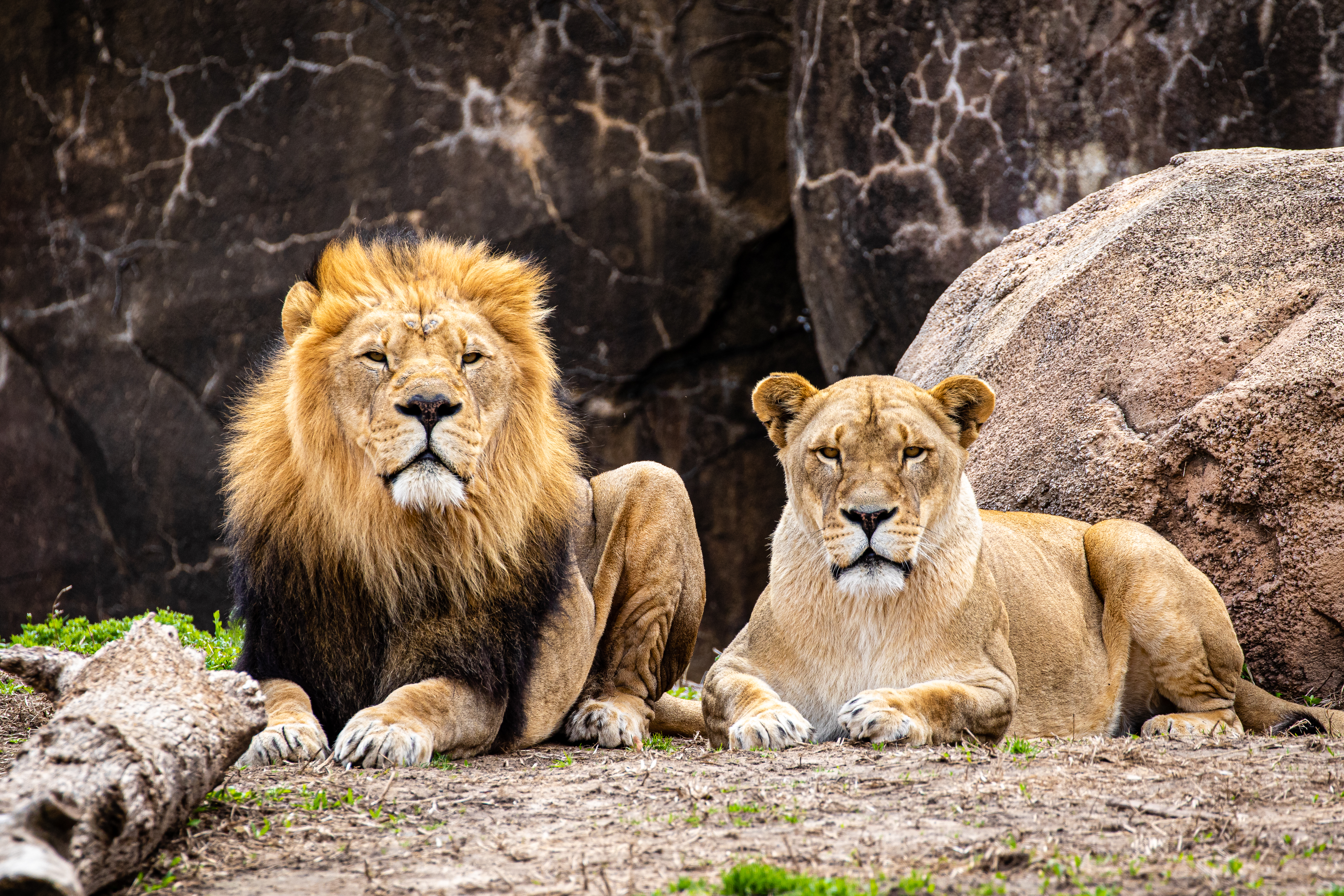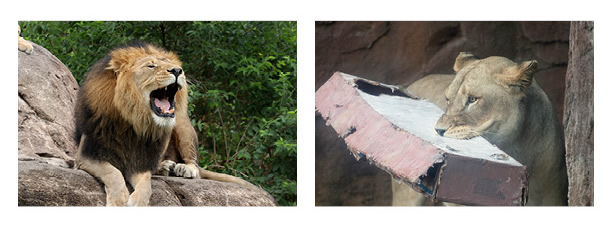It’s Leo season- both for fans of astrology and big cats.
If your birthday falls between July 23 and August 22 then you’re a Leo, the fifth Zodiac sign represented by a lion, or Panthera leo.
World Lion Day falls in the middle of Leo season on August 10.
To celebrate, Sedgwick County Zoo plans to have a “roaring” good time. From 10 a.m. to noon explore lion biofacts, hands on activities, and learn about how you can help lions from right here in Kansas.
The festivities will take place at the Pride of the Plains habitat, where our lions live. But in the wild, lions can be found in a range of habitats.
“Lions are found in forests, savannahs, shrubland, grasslands, and deserts,” Primary Lion Keeper Jan Nelson said. “African lions are found mostly in sub-Saharan Africa and are rarely found in the very dry deserts.”
African Lions prefer to stay in savannahs and grasslands where there’s ample prey.

“They are not found in jungles even though they are said to be ‘King of the Jungle’,” Nelson said.
Most likely, the misnomer is the result of a simple error in translation. “Jungle” is derived from a Hindi word, “jangala,” meaning uncultivated land. In India, Asiatic lions much like African lions live in plains. It’s easy to see how “jangala” was misunderstood by British colonizers as “jungle” and then applied to the African plains where lions are also found.
They’re considered wildlife royalty due to the fact that they have a regal and proud look to them. A group of lions is called a pride after all. They’re also apex predators at the top of their food chain.
Disney’s 1994 film “The Lion King” worked to further cement the title of “king” belonging to lions.
Here at SCZ we have two lions, Michael and Kianga.
“Michael likes to vocalize when he comes in the den in the morning and in the evening,” Nelson said. “Kianga will usually join in with him.”
Lions have the loudest roar out of all big cats and can be heard up to 5.5 miles away. Michael likes to vocalize from the top of the large rock in his habitat, appropriately called Pride Rock.
“Kianga enjoys playing with boomer balls and destroying boxes,” Nelson said.

Michael was born in 2008 right here at SCZ. Kianga was born in 2007 at the Lee Richardson Zoo in Garden City, KS. The median age for lions in human care is around 16.9 years, but the oldest on record lived to be 26.
“We would consider Michael and Kianga moderately mature,” Nelson said. “They are both on a daily dose of medicine as a preventative to help keep their joints healthy and mitigate any pain. They also receive Nebraska Brand Special Beef diet.”
SCZ has had lions almost from the start. Our first lion, Tina, arrived in 1972.
In 2019 Sedgwick County Zoo went through a rebranding, which included updating our logo.
Previously, the logo was a paw print, but the decision was made to change that. Now, our “Dandy Lion” serves as the icon of the Zoo.
When announcing the decision to rebrand, the Zoo said, “Our logo reflects excitement and passion to create a better experience at the Zoo. Afterall, who better than the King of the Jungle paired with our native sunflower to reflect our deep caring commitment to conserving wildlife and wild places.”

The African Lion population has decreased by nearly 43% in the last 21 years. According to the IUCN, they’ve been eradicated in at least 12 African countries, and have a population of only 23,000-39,000.
“Causes of decline include killing in defense of human life and livestock, habitat loss, prey base depletion, logging, trophy hunting, and civil wars,” Nelson said. “A new emerging threat is the use of bone and body parts for traditional medicines in Africa and Asia.”
Organizations like the Botswana Predator Conservation Trust and the African Wildlife Foundation conduct research such as census and monitoring to help humans and predators co-exist. At SCZ, you can adopt a lion by becoming a Zoo Pal and help fund the care Michael and Kianga need.
As far as big cats go, lions are pretty atypical in appearance.
“Male lions are the only cat species with a mane,” Nelson said. “Lions are also the only cat where the females are smaller and look different than the male.”
As male lions age, their manes darken. Research shows that female lions tend to prefer males with darker and thicker manes.
Lions also stand apart as the only cat with tufts at the end of the tail. This tuft is most likely used to help communicate within the pride.
“There is also a small spur at the very tip of the tail formed by the last vertebrae,” Nelson said. “Its purpose is unknown.”
Whether you come to the Zoo on August 10 for World Lion Day, or any other day of the year, you can see and appreciate the animals that call SCZ home.
Early morning visitors are likely to see Michael and Kianga basking on Pride Rock and surveying their kingdom. In the heat of the day, they can be found napping in the shade.
“Educate yourself about your world, animals, and the environment,” Nelson said. “We are all connected. It is the big circle of life”